
The word “hoarding” probably evokes a particular image, made more common by shows like Hoarders that highlight extreme examples. In reality, not all hoarders have rooms full of items piled high to the ceiling.
The Institute for Challenging Disorganization (now, there’s a relatable title!) has classified hoarding behavior into five levels on their Clutter-Hoarding Scale.Level 1 Hoarding
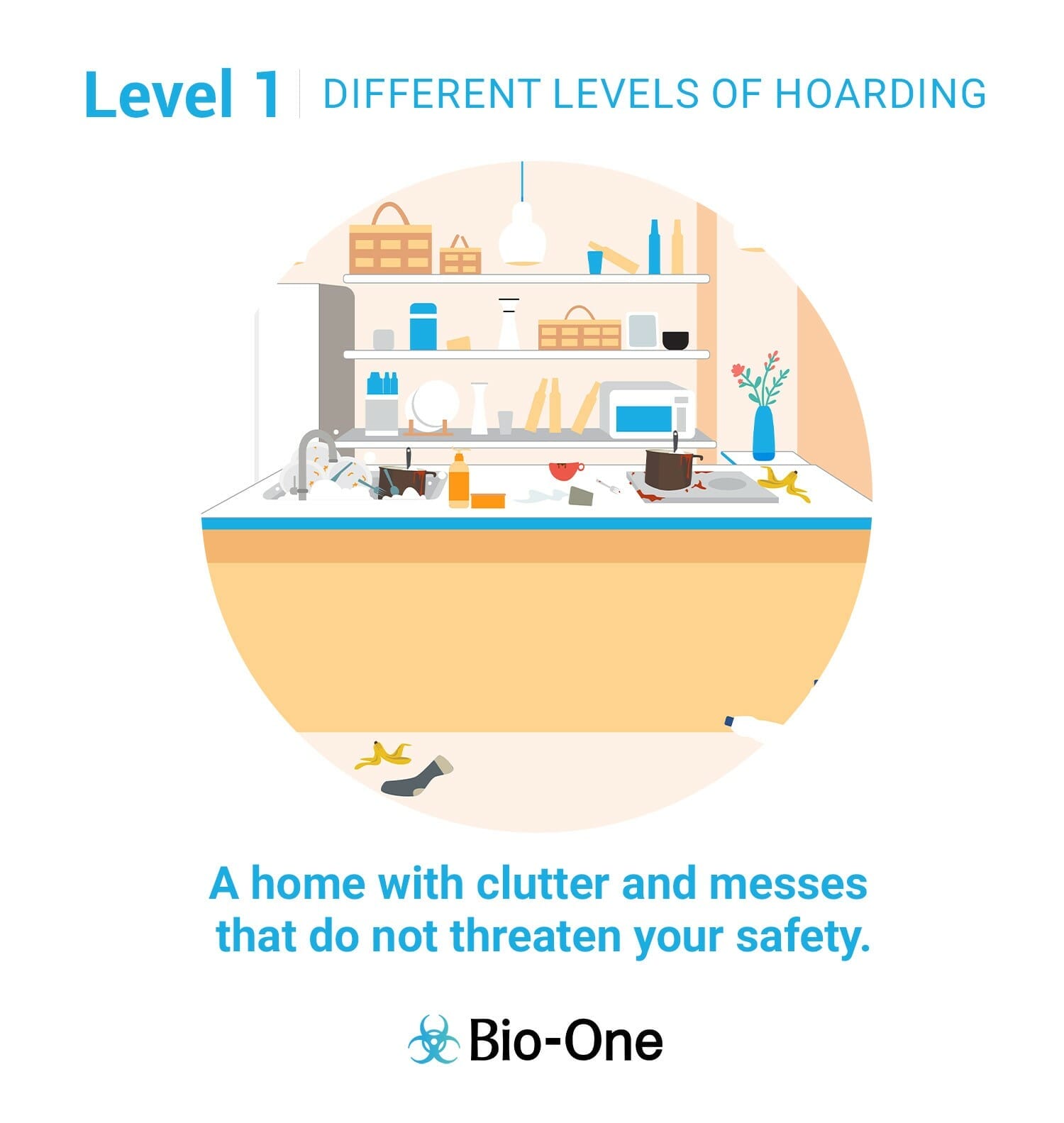
At Level 1, a home is not pristine, but the space is still easily accessible and sanitary. There is clutter, but no concern for safety. Most, if not all of us, have been in Level 1. Many people spend most of their time in this stage.
Here are the defining characteristics of this level:
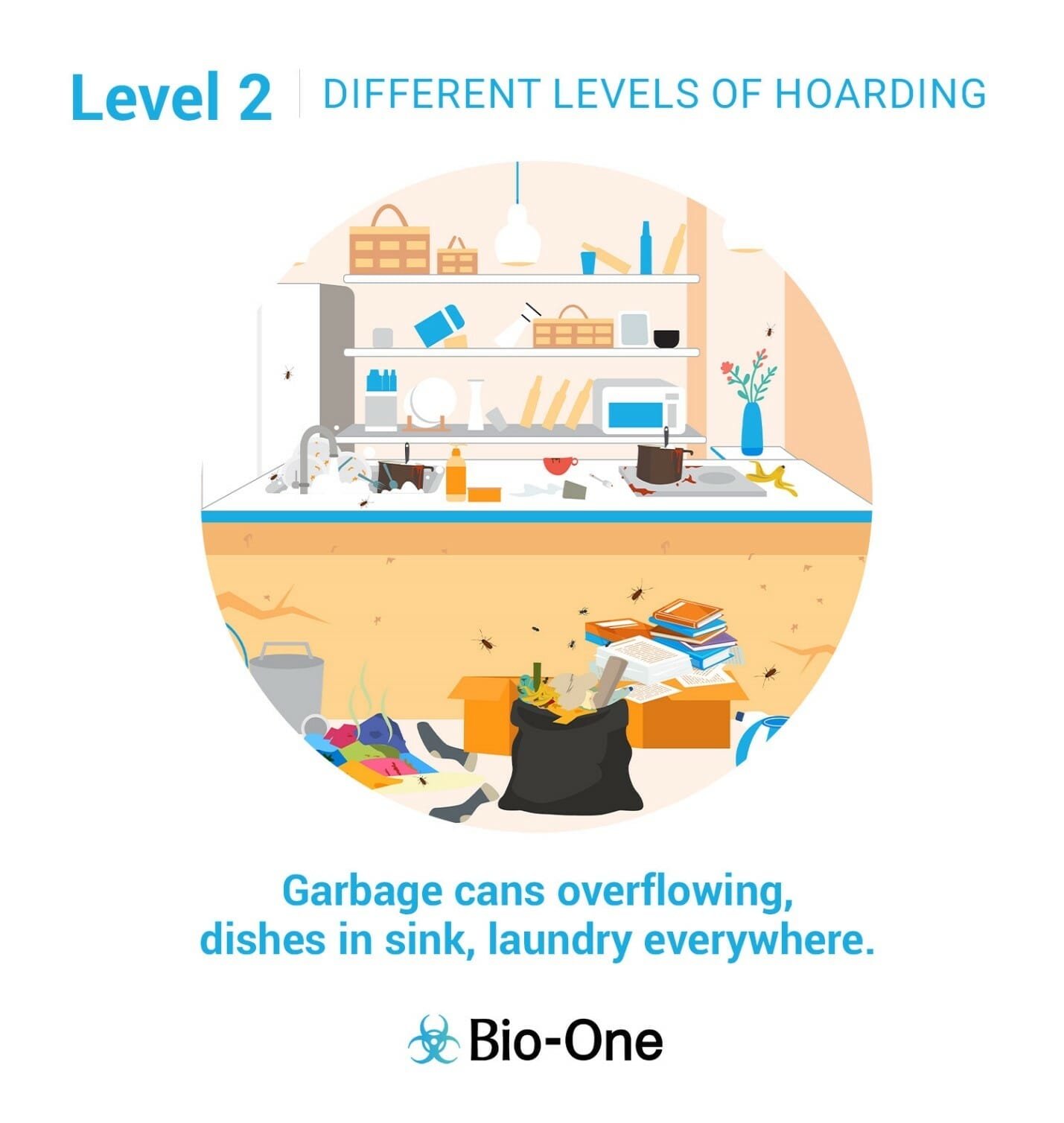
At Level 2, the home is still very livable, but there’s more evidence of disarray. The home is in need of cleaning and may be starting to overwhelm the residents. The hygiene level isn’t optimal.
Most of us bounce between Level 1 and Level 2. However, here are the more defining characteristics of Level 2:
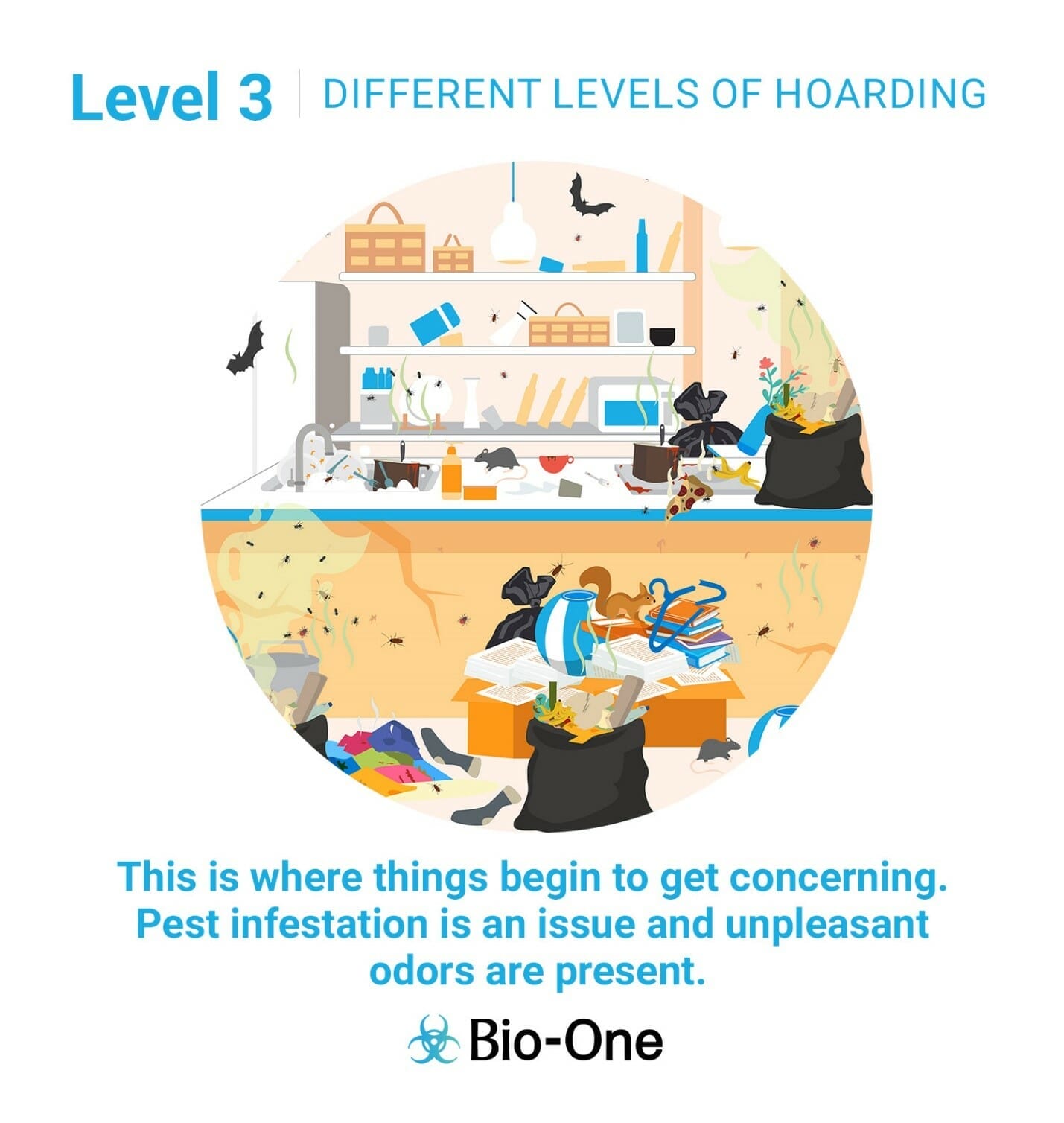
Level 3 is considered the turning point between manageable household disorganization and a more serious issue. Level 3 homes show extreme disorganization and indicate hoarding behavior.
Here are the defining characteristics of this level:
Level 3 households should consider hiring outside help. Although, it’s still possible to get it under control with a concerted effort from the whole family
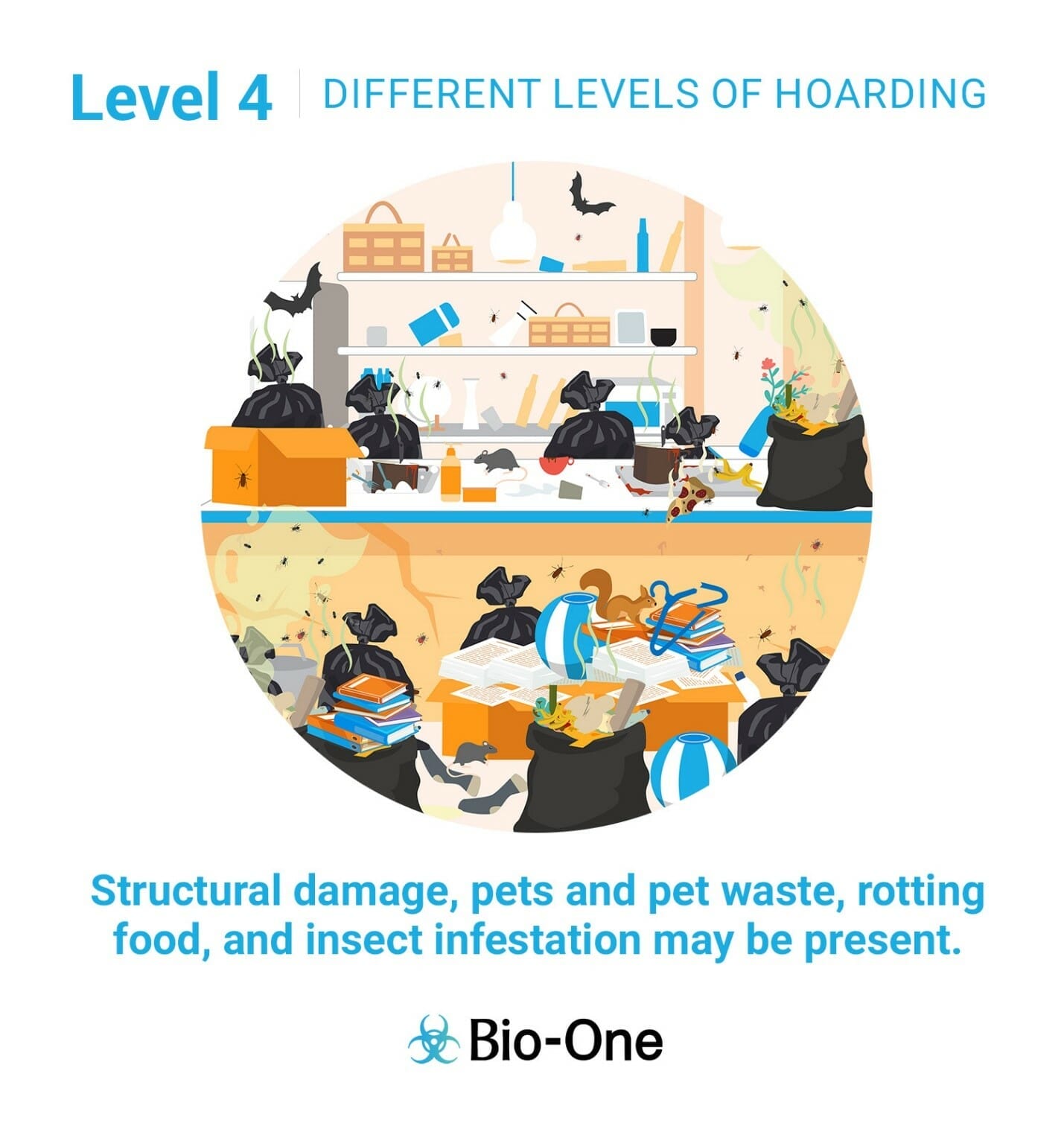
At Level 4, the home shows excessive clutter.Those living in Level 4 conditions need professional help. At this level, part of getting help includes professional cleaning to transform the house into a safe, hygienic space where people can thrive. Mental health counselors and social workers may also step in to help residents change their habits.
Here are the defining characteristics of this level:
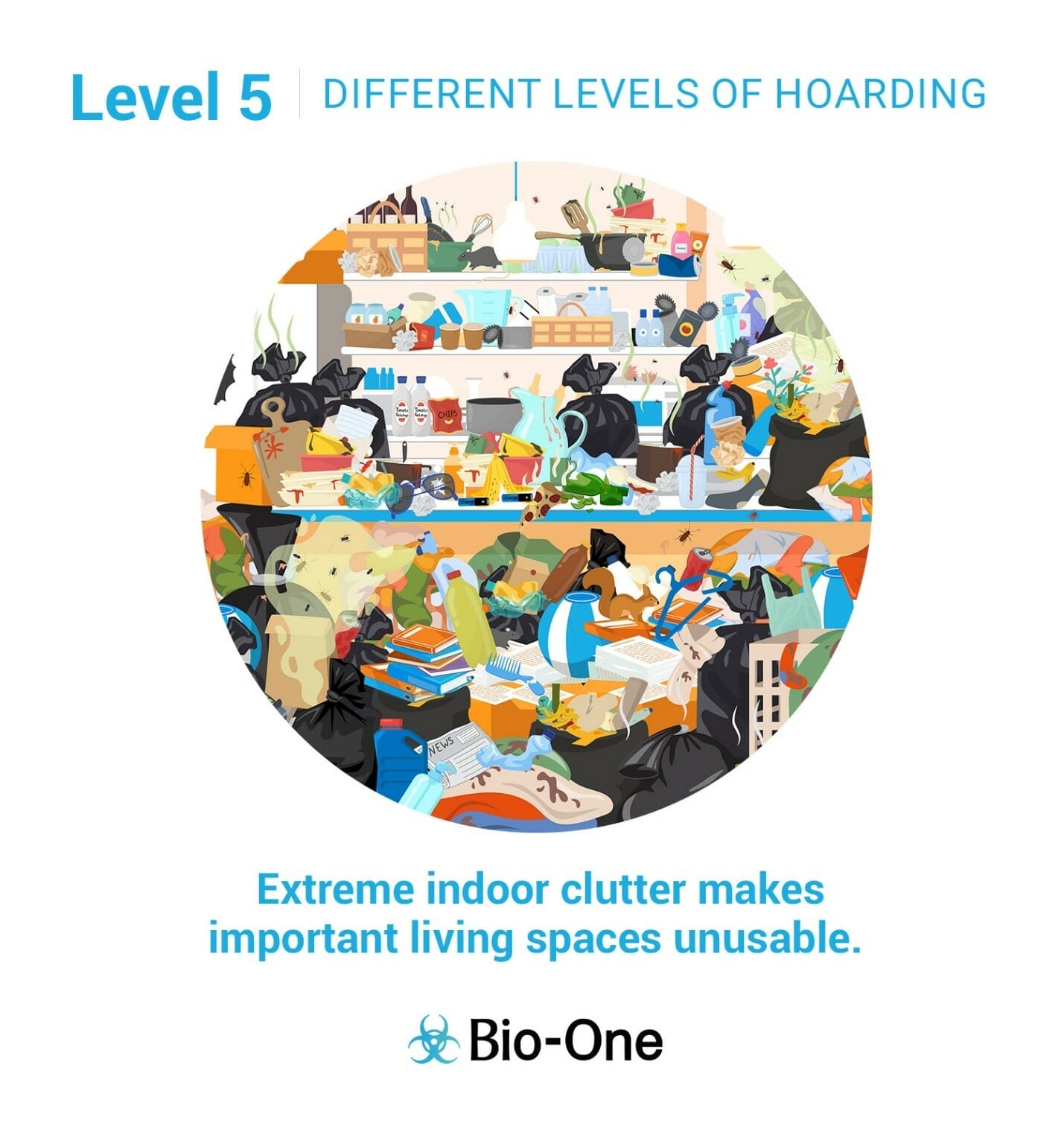
Level 5 is the highest level of hoarding behavior. Level 5 homes are alarmingly hazardous.
They require professionals with safety equipment and training to clean.
Here are the defining characteristics of this level:
If you or someone you know is struggling with these levels of hoarding we are here to help.
You can find more information at https://biooneorange.com/ or contact us at (714) 397-8375
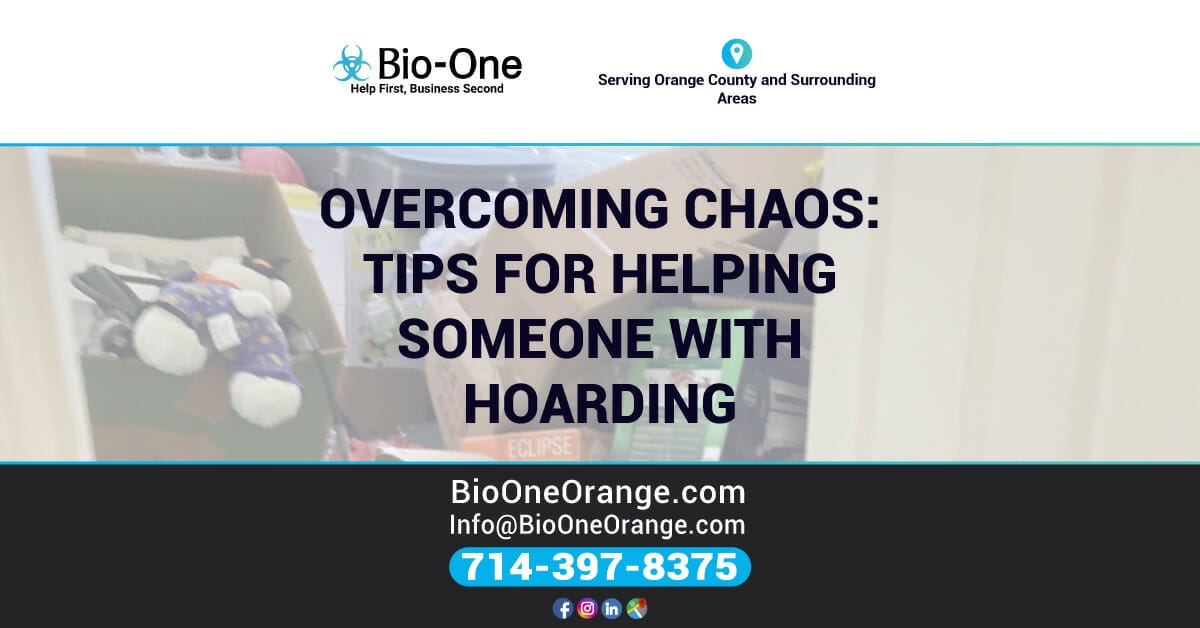
Living with someone who hoards can be an incredibly chaotic and difficult experience. Hoarding often leads to disorganization, clutter, and extreme stress for both the person suffering from the disorder and their loved ones. If you know someone struggling with hoarding behaviors, it’s important to understand that helping them manage the disorder requires patience and understanding. Here are a few tips for helping someone with hoarding behaviors more effectively.
Helping someone who hoards can be a chaotic and overwhelming experience. However, some tips can help to make the process more manageable:
Make sure that the person you are helping understands what you are willing and able to do, and set realistic goals for the amount of progress that can be made.
Let the person know that you are there to listen and understand. Encourage them to seek professional help or join a support group if possible.
Make sure that the home is clean and clutter-free, as this can help reduce stress levels and create an atmosphere of motivation. Additionally, try to focus on the positive aspects of the situation, such as the opportunity to declutter and organize. Be sure to take care of yourself during this process!
Helping someone with hoarding can be emotionally draining, so make sure to take time for yourself and ask for help when needed. Following these tips can help make the experience more manageable for you and the person you are helping.
Hoarding disorder is a serious mental illness that can profoundly impact a person's life. While hoarders may feel a strong attachment to their belongings, the reality is that their possessions are often taking over their homes and putting their health and safety at risk. For family and friends, it can be difficult to watch a loved one struggle with a hoarding disorder, but it is important to resist the urge to clean up their home for them.
Just cleaning will not solve the underlying problem and may only worsen things. Instead, try to provide support and understanding. Encourage them to seek professional help, and offer to help them declutter their home in a respectful and non-judgmental way. People struggling with hoarding often need support to overcome this condition.
If you know someone struggling with hoarding, you may feel helpless and unsure how to best help them. Bio-One of Orang can work with your loved one to safely and respectfully clean up their home. Our team of professionals has the training and experience necessary to handle even the most challenging hoarding cases. We will work with your loved one to clean up their home and help them get their life back on track! Contact us today to learn more about how we can help.

Bio-One of Orange offers solutions to life's most challenging and unexpected situations. We guarantee a quick response time, so you can rest assured that help is always on the way. With over 20 years of experience in the industry, Bio-One prides itself on providing top-quality service and support. If you're facing a difficult situation, don't hesitate to contact the Bio-One team. We're prepared to help you every step of the way, all the time.
Bio-One of Orange is a family-owned company that takes pride in providing quality care for residents throughout California’s Southern region. From Aliso Viejo to Costa Mesa and beyond. As members of the Orange Chamber of Commerce, our certified, professional hoarding cleaners are ready to help. Bio-One of Orange is available 24/7, 365 days a year. Contact us at 714-397-8375.